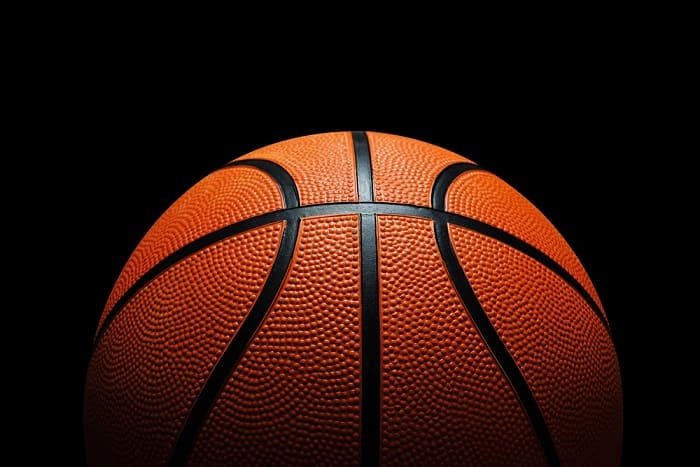- The Jump Manual Review By A Pro Player [Bonus Included] - September 23, 2023
- 3 Best Basketball Shoes For Casual Wear [September 2023] - September 3, 2023
- 5 Best Basketball Shoes For Jumping [September 2023] - August 25, 2023
It’s a crisp autumn day, and the leaves are starting to turn yellow and red. You walk into your high school gym, and suddenly waves of nostalgia smack your brain.
You remember playing on this court; you were pretty good, too. You pick up a basketball and take a closer look. You notice that it’s covered in small dots.
What’s the story behind these mysterious pebbles?
How many dots does a basketball have?
As it turns out, the dots are there for a particular reason.
Read on to find out!
Contents
How Many Dots Does a Basketball have? (Or Pebbles)?
The standard size for a basketball is 29.5 inches in circumference. So a standard basketball has 122 dots per square inch. So in total, there are over 35,000 dots throughout the ball’s entire surface.
Why Does a Basketball Have Dots Or Pebbles (What’s the Purpose?)
Producers first added the dots to basketballs in the 1950s. The original purpose of the beads was to improve players’ grip on the official ball.
Keeping a good grip on a smooth, leather basketball with sweaty hands can be challenging. The raised dots give players a better way to hold onto the ball.
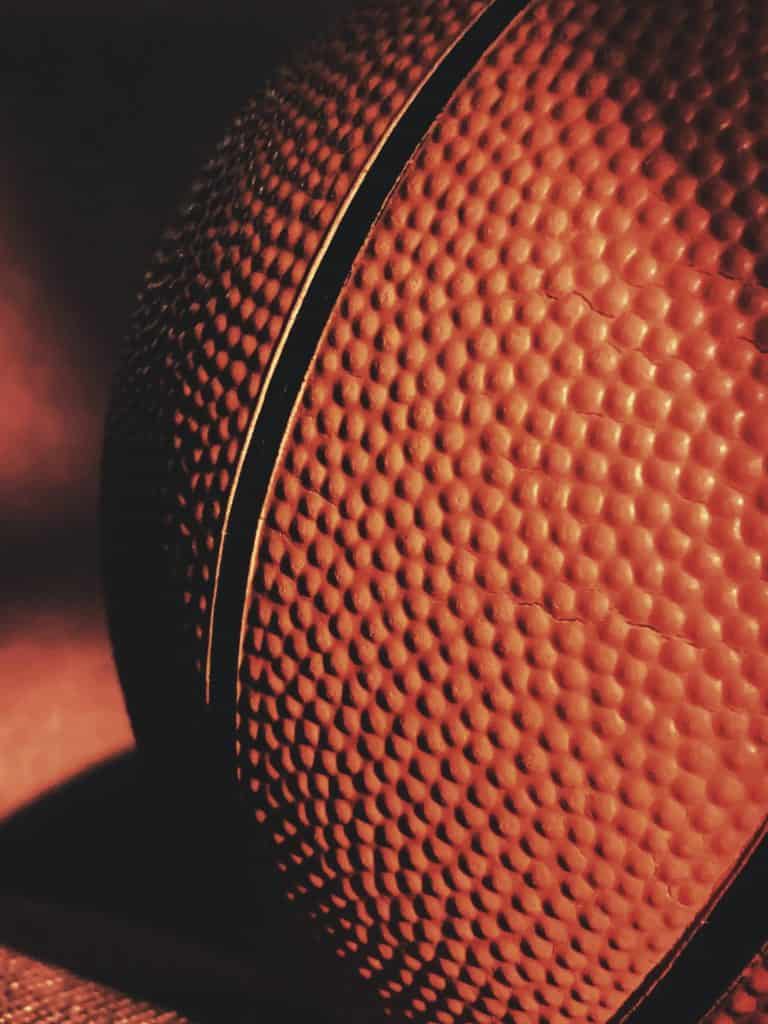
In addition to helping players grip the ball, the dots also create a uniform surface. This makes it easier for players to control the bounce and spin of the ball.
More pebbles mean a rougher surface, whereas fewer pebbles mean a smoother texture. Beginner players often use basketballs with a lower dot number because they are easier to control.
However, NBA players typically prefer balls with a higher dot number (122 dots per square inch, which translates to about 35,000) because they provide more spin and accuracy when shooting.
What’s the History of a Basketball Design?
The basketball design has undergone several changes since it was first invented in 1894 by James Naismith. At first, players used a soccer ball.
Once the game grew, early basketballs were made by a bicycle manufacturing company and were brown leather with laces. This game ball was challenging to dribble because of their lack of bounce and tendency to bounce erratically.
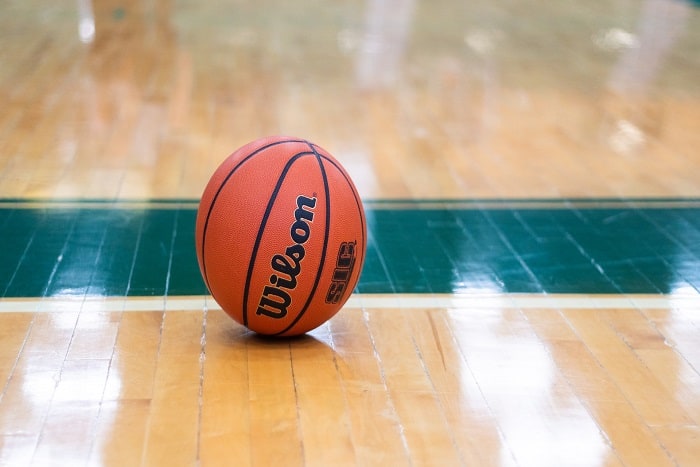
In 1929, the design was improved for more bounce and concealed laces, which helped eliminate these problems. Later design changes focused on improving the ball’s grip and its ability to absorb impact.
As a result, the NBA standard basketball is a highly specialized piece of equipment essential for playing the game at a high level.
In 1972, Spalding introduced the first synthetic leather official basketball, much more durable than the traditional leather ball. The following year, the NBA adopted this new material for their official game ball.
Why Is the Basketball Orange?
The orange color of the basketball (see an example of Molten balls here) is not just for show. The orange color is more manageable for players to see against the background of a dark gymnasium or an outdoor court.
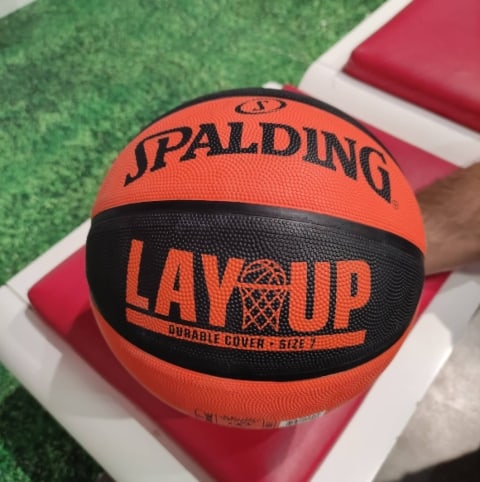
In addition, the orange color is also easier for referees to see when the ball is in play. This makes it easier for them to make calls and keep track of the game.
What Are NBA Balls Made Of?
NBA balls (standard 29.5 inch circumference) are made of leather, which gives them a smooth, comfortable feel that is easy to grip (added friction).
First, the ball’s panels are stitched together, and then the ball’s entire surface is covered with a layer of synthetic rubber. The panels are then glued to the ball’s surface. The final step is to add the logos (Spalding, NBA) and markings.
All these materials work together to create a ball that is easy to handle and provides an excellent bounce. NBA balls are specifically designed to meet the high standards of professional basketball.
They are tested for resilience, hardness, size, weight, shape, and color consistency.
Check out this video about how Spalding makes official NBA balls:
What Is a Dot (Pebble) in Basketball?
A dot or pebble on a basketball is a raised, textured surface on the ball that helps players grip the ball and provides a uniform surface for shooting and dribbling.
The dots are typically arranged in a regular pattern and are made of rubber or another material that is comfortable to grip. If the dots and the seams get damaged, then the ball may deflate and require patching.
How Many Panels Does an Average Basketball Ball Have?
A standard 29.5 inch circumference basketballs typically have between 8 and 12 panels. The number of panels on a ball does not affect its performance or durability.
Why Does a Basketball Have Lines and Panels?
The basketball’s lines serve two functions – they allow a player to grip the ball better and help the player control the ball. If the ball were smooth, it would be more challenging to control its direction.
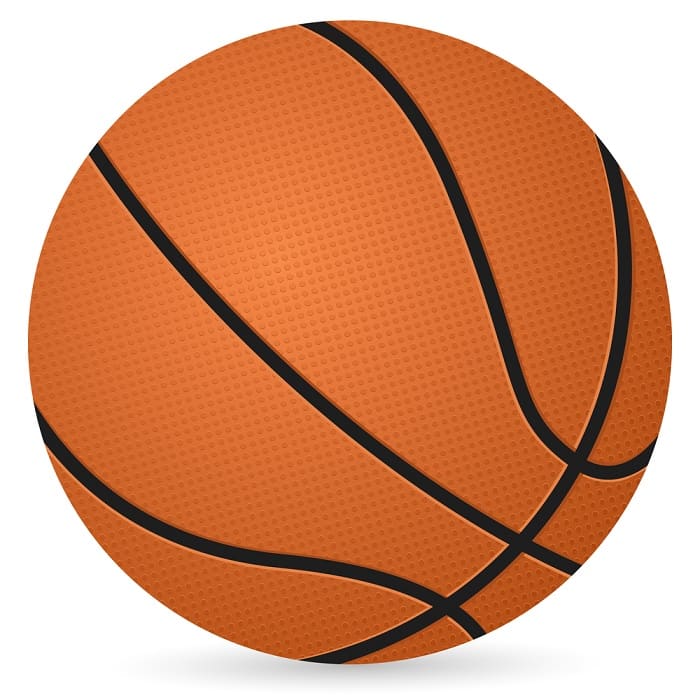
Lines also serve an essential purpose in shooting. The best shooters insert their fingers into the grooves between the lines to help them control the ball’s spin. When the player flicks their wrist, the ball will rotate on its axis and spin.
The amount of spin will determine how the ball travels through the air and how it bounces when it hits the rim. Spin helps lead to softer bounces around the rim – something called a “shooter’s touch.”
The panels on a basketball are there for reinforcement and durability – they add an extra layer of protection against wear and tear. Without panels, the ball can develop holes and tears more easily.
What Are the Bumps on a Basketball Called?
The many dots on a basketball are called pebbling. The pebbling helps the player grip the ball and makes it easier to control. When the basketball is new, the pebbling is quite pronounced, but it wears down and becomes less noticeable over time.
Most people don’t even realize that the bumps are there unless they look closely.
The many dots covering the ball are an essential part of the construction of a basketball and helps to make it easier to handle.
What Is A 8 Panel Basketball?
An eight panel basketball is a ball specifically designed for use on a regulation-sized basketball court. The basketball is made of synthetic leather and has a unique design that allows it to be used on any surface.
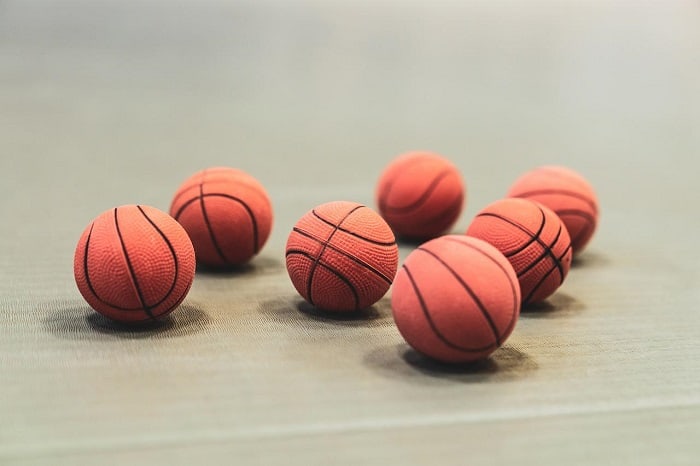
The basketball also has an extended lifespan, making it an ideal choice for those who play basketball regularly. An 8 panel basketball typically costs slightly more than a traditional basketball, but the benefits far outweigh the cost.

